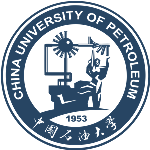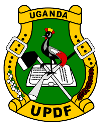Day 2 :
Keynote Forum
Steven A. Tedesco
Atoka Inc., USA
Keynote: Application of surface geochemical survey with aeromagnetic, subsurface geology and seismic data in exploration for conventional reservoirs
Time : 9:30-10:15

Biography:
Dr. Steven Tedesco has thirty-four years of experience in the resource business involving all aspects of petroleum exploration and production with additional experiences in coal and precious metal mining, ranching and farming. Dr.Tedesco is a high achiever who has a history of successful business management and money raising and is looking to serve on the board for a company with the right assets, vision and organization.
Abstract:
Surface geochemistry is an integral part in finding petroleum reservoirs when used in conjunction with subsurface and seismic data. Surface geochemical methods presented here are micro-magnetics, iodine and soil gas results that detailed regional and specific areas for further exploration and delineation by subsurface and seismic tools. The use of surface geochemical methods is based on the concept that vertically migrating hydrocarbons migrate from a reservoir to the surface along micro-pores, micro-fractures and micro-unconformities. The petroleum fluids migrate as the result of simple physics whereby they move toward an area of ever decreasing pressure. The petroleum compounds eventually enter the soil substrate and react with existing oxides, carbonates, metals, plants, bacteria, water and clays. They can cause changes in Eh, pH, deposition of or removal of radioactive, halogen and carbonate minerals. Petroleum compounds, such as methane and ethane will escape into the atmosphere. One of the pressing questions for an explorationist is whether a target defined by subsurface geology, 3D or 2D seismic contains hydrocarbons. The presence or absence of a surface geochemical anomaly determines if exploration should stop or move forward. The lack of a surface geochemical anomaly, as defined by actual drilling case histories, there is a 95% chance it will result in a dry hole, marginal or uneconomic well. The presence of a surface geochemical anomaly, strong or weak, definitive or chaotic in shape, does not predict a productive discovery. Based on published articles from last 80 years the use of surface geochemistry can increase drilling success from 10% to 60%. Surface geochemistry has proven to be a very successful exploration tool when integrated with subsurface and seismic methods. These methods can be used to find conventional reservoirs in any basins in the world such as the Assam, Krishna Godavari and Cauvery basins in India. The Assam Basin which has several producing structures related to a wrench fault system. Several structures are not productive. The basin would benefit from surface geochemistry in that it could screen areas to determine if there is hydrocarbons present or not prior to shooting 3D seismic and drilling. A similar situation can be found in identifying productive stratigraphic areas in the deltaic system in the Krishina-Godavari Basin. Presented here will be onshore case histories utilizing surface geochemistry with seismic and subsurface geology from the Denver, Williston, Cherokee and Forest City basins, USA; Michigan basin, Canada and the Zuunbayan and Unegt basins, China.
Keynote Forum
Daniel J. Soeder
South Dakota School of Mines & Technology, USA
Keynote: Groundwater Quality and Fracking: Current Understanding and Science Needs
Time : 10:15-11:00

Biography:
Daniel J. Soeder is director of the Energy Resources Initiative at South Dakota School of Mines & Technology in Rapid City, SD, USA. He joined SD Mines in May 2017 with eight years of experience as a research scientist at the Morgantown, WV campus of the U.S. Department of Energy (DOE) National Energy Technology Laboratory, where he investigated the environmental risks of unconventional oil and gas development, and 18 years as a hydrologist with the U.S. Geological Survey (USGS) studying groundwater contamination on the U.S. east coast, and nuclear waste isolation in Nevada. Prior to joining the USGS, he spent a decade with the Gas Technology Institute in Chicago, researching hydrocarbon production from unconventional resources. He also worked as a DOE contractor collecting and characterizing Eastern Gas Shale Project cores. He holds a BS from Cleveland State University, and an MS from Bowling Green State University (Ohio), both in geology
Abstract:
The National Ground Water Association in the United States hosted workshops in 2014 and 2017 to bring together a group of nearly 100 prominent North American hydrology researchers to assess the current understanding of potential risks to groundwater quality from hydraulic fracturing (“fracking”) and unconventional oil and gas development.
The consensus from both meetings was that fracking poses two main risks to groundwater quality: 1) stray gas migration, and 2) potential contamination from chemical and fluid spills. Risk assessment is complicated by the lack of pre-drilling baseline measurements, limited access to well sites and industry data, the constant introduction of new chemical additives to frack fluids, and difficulties comparing data sets obtained by different sampling and analytical methods. Specific recommendations to reduce uncertainties and meet science needs for better assessment of groundwater risks include improving data-sharing among researchers, adopting standardized methodologies, collecting pre-drilling baseline data, installing dedicated monitoring wells, developing shale-specific environmental indicators, and providing greater access to field sites, samples, and industry data to the research community.
- New frontiers in Petroleum Engineering | Reservoir Engineering & Reservoir Simulation | Environmental Impacts in Petroleum Engineering | Petroleum Substitutes | Petroleum Economics
Location: Sydney

Chair
Steven A. Tedesco
Atoka Inc., USA
Session Introduction
Jian Zhao
China University of Petroleum, China
Title: Experimental and Theoretical Evaluation of Solid Particle Erosion in An Internal Flow Passage within A Drilling Bit
Time : 11:15-11:45

Biography:
Jian Zhao is a lecturer in drilling engineering at the China University of Petroleum. His research interests include high pressure water jet penetration, particle impact drilling, solid mechanics, and liquid-solid flow. Zhao holds a B.Sc. degree in petroleum engineering, an M.ASc. degree and a Ph.D. degree in drilling engineering, all from the China University of Petroleum.
Abstract:
Recently, the particle impact drilling (PID) technology has attracted numerous interests as it can increase the rate of penetration (ROP) efficiently. Particles that are accelerated in the nozzles within the drilling bit impact the hard rock with a high velocity and frequency, which can increase the rock breaking efficiency greatly. So far, no attempts have been made to evaluate solid particle erosion and optimize the drilling bit structure together with operational parameters since the steel particles can increase the erosion of its internal flow passage resulted from the liquid-solid flow with a high velocity. In this study, a pragmatic and robust technique has been developed to experimentally and numerically evaluate solid particle erosion in an internal flow passage within a drilling bit under various conditions. Experimentally, a field-scaled three-dimensional (3D) experimental setup is developed to perform erosion experiments under various conditions, during which operating pressure, particle size, and velocity are changed, while the erosion rate of the internal flow passage within the drilling bit is continuously monitored and measured. Numerically, a two-way coupled Eulerian-Lagrangian approach is employed to solve the liquid-solid flow in the internal flow passage. The liquid is described as a continuous phase that can be solved by the Navier-Stokes equations and the particles are described as a discrete phase that can be solved by the second law of Newton. A commonly used erosion model is utilized to quantify solid particle erosion behavior in such an internal flow passage during two phase liquid-solid flow. The erosion is found to be mainly distributed on the contraction surface, while, at the inlet velocity greater than 8.0 m/s, the average erosion rate is dramatically increased. The maximum erosion rate is increased quickly as the particle concentration is smaller than 5.0 vol% and the inlet angle is increased when it is smaller than 23°. At a low erosion rate, the optimal particle diameter was found to be 2.0 mm.
Wu Zhongbao
Research Institute of Petroleum Exploration and Development, China
Title: The Research of Thansformation of Waterflooding Development Model in Super-low Permeability Oil Reservoirs
Time : 11:45-12:15

Biography:
Wu Zhongbao born in July 1970 in JiangShu province of china, senior engineer. He graduated from China University of Petroleum (Hua Dong) in 1993. He worked in Jiangsu oilfield for 10 years. He was awarded the China University of Geosciences (Beijing) Doctoral Degree in 2007, and then entered the post doctoral mobile station of Research Institute of Exploration and Development of petrochina(RIPED).He worked in Haita research center of RIPED in 2009 and worked in simulation and software center In 2017.In 2018, he was rated as the second stage expert of RIPED. He is mainly engaged in numerical simulation and development plan designing of complex reservoirs, such as low permeability reservoirs, small fault block reservoirs ,special lithology reservoirs and so on.
Abstract:
Statement of the Problem: It is very difficult to buid effective displacment system for super-low permeability oil reservoirs through general fracturing and water injection,resulting in low oil production of single well,high ratio of uneffective waterflooding,low economic performance and so on,all of these show that the traditional waterflooding development model can’t fit economical and effective development of super-low permeability oil reservoirs. Methodology & Theoretical Orientation: According to the imbibition recovery mechanism, it is figure out that imbibition oil recovery rate has increased dramatically in magnitude after network fracturing in super-low permeability oil reservoirs , therefore,imbition oil recovery has changed from the subordinate effect into the donimant one in super-low permeability oil reservoirs . Futhermore, by Summing up the practice of many oil fields, some imbibition development model are proposed ,such as waterflood huff and puff, asynchronous injection and production, exchanging between production wells and injection wells.Findings: An brand-new comprehensive development model "network fracturing + imbibition oil recovery " is created,this model is already applied in some oil fields in china and the effect of preliminary implementation is remarkable,it is estimated that the final recovery efficiency of the reservoirs can by increased by over 10%. Conclusion & Significance:The new development model holds important popularization and application foreground and will take more and more important effect on low permeability oil reservoir development.
Yang Yang
Research Institute of Petroleum Exploration and Development, China
Title: Experimental Investigation of Non-linear Flows in Artificial Multiscale Frac-vuggy Media
Time : 12:15-12:45
Biography:
Yang Yang, PHD, reservoir engineer, has studied on reservoir engineering and reservoir numerical simulation for many years
Abstract:
The size of the fractures and vugs ranges from micron scale to centimeter scale in frac-vuggy reservoir. And there is almost no flow in the rock matrix. Due to the multiscale of media, inertial coefficient is a key parameter to predict the correct production performances and behavior of frac-vuggy reservoirs. This paper introduced the process of making multiscale frac-vuggy media and will study the inertial coefficient of Forchheimer equation and its effect on oil-water two-phase flow in the media.
The experimental results of flow law showed that if flow rate is constant, the existence of non-linear flows for single water phase is determined by the fracture width and filling degree. And the effect of the vug can be ignored. However, for oil-water two phase flow, the fracture and vug both play an important role. Meanwhile, based on Rescaled Range Analysis(R/S), a mathematical model of judging non-linear flow is proposed. The Receiver Operating Characteristic (ROC) curve showed that it can accurately determine the flow law for oil-water two phase flow.
Through the analysis of the experimental data of non-linear flow, this paper proposed a modified Geertsma's empirical expression of inertial coefficient, which is a function of wetting phase saturation, fracture width, vug diameter, fracture porosity, vug porosity and total permeability. It’s more suitable for multiscale frac-vuggy media than previous literatures reports. This study showed the no linear flows and oil-water relative flow capacity in unconsolidated frac-vuggy media. They are both important in frac-vuggy reservoir numerical simulation.
Ferri Yohannes
PT Badak NGL,Indonesia
Title: Bontang lng plant operational mode strategy To accommodate lean gas entrance
Time : 12:45-13:15
Biography:
Abstract:
Bontang Liquefied Natural Gas (LNG) Plant is one of the largest LNG facilities having a capability to produce up to 22.5 Million Tons Per Annum (MTPA) LNG and 1 MTPA Liquefied Petroleum Gas (LPG). It has been operated for more than 40 years in the most excellent practice. Starting 29 May 2017, Bontang LNG Plant receives new feed gas supply which contains lean composition (97% methane content) and causes the overall feed gas composition to Bontang LNG Plant become leaner than the original design (methane content approximately 83%).
The entry of leaner feed gas to Bontang LNG plant presented operational issues both commercially and technically such as lower LNG quality (HHV), heavy hydrocarbon carry over, lower fractionation turndown ratio, and potential un-absorb gas.
This paper explains 3 key plant operational strategies that have been selected in Bontang LNG Plant to accommodate leaner feed gas supply,
- Upstream feed gas delivery strategy;
- Plant modification and operating procedure improvements;
- Dual LNG HHV production: LNG Plant can produce both lean and rich LNG products simultaneously.
Implementation of these strategies have been successfully performed and provide plant operating flexibility for new gas producers and maintain Indonesia’s position in the very competitive LNG business.
Tegwan Nyonga Hubert
Banthungnoi school, Thailand
Title: Oil and Gas Offshore Safety Case (Risk Assessment)
Time : 14:00-14:30
Biography:
Abstract:
It is one example of the offshore oil and gas construction and operation projects objectives to ensure that all its activities are managed in a manner that ensures the health and safety of all personnel and protection of the environment. In this report I try to clarify the entire colleagues actually what is the safety requirements in to oil and gas industry. I read previous study and research report, everybodynever they don’t mention what is the requirement of safety in the industry. In this report I not focuses on academy because after academy all the student target is industry that’s why in this small report I focused on industrial requirements not academic requirements. This is achieved through the management of risks resulting from:
Major accident hazards, which have the potential to affect a significant proportion of the offshore workforce and the integrity of the installation itself.
Hazards resulting from the company’s day to day operational activities.
Occupational health hazards relating to the working environment.
The following sections describe the management of the risks associated with these hazards.
Nasser Drago
UPDF, UGANDA
Title: Exploring and enhancing the recent trends and applications in the energy sector of Uganda: A legal perspective
Time : 14:30-15:00
Biography:
Nasser Drago is a Lawyer and an officer working with the Uganda Peoples Defence Forces as a prosecutor in the Court Martial Appeal Court. He has a Master of Laws in Natural Resources majoring in oil and gas
Abstract:
This paper reviews the energy sector of Uganda, which is characterized by excessive use of Biomass to provide for over 90% of the energy needs, Uganda being one of the least developed countries in the East African Region. Hydropower provides over 90% of the electricity generated in Uganda while solar, geothermal and other energy sources are underdeveloped. The legal regime and the energy policies are geared towards the use of modern, and clean energy efficient technologies. Various institutions are important in ensuring sustainability in the energy sector of Uganda. This is in form of stimulating Public Private Partnership, attracting multilateral and bilateral agenciesto provide funding, grants, and technical assistance in renewable energy projects. The Clean Development Mechanisms of the United Nations avail project developers the opportunityto obtain carbon finance. Several opportunities in Uganda’s energy sector have been highlighted. Equally, several challenges hindering the developmentof the energy sector and utilizationof renewable energy resources have been identified. Finally, conclusion and recommendations for proper management of Uganda’s energy sector have been suggested.



